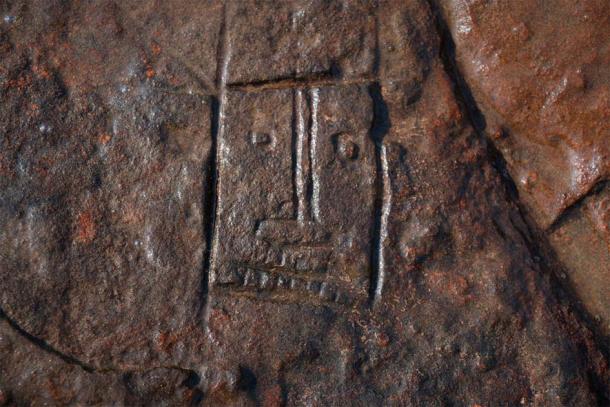Due to a current drought in the heart of the Amazon rainforest, enigmatic ancient engravings dating to between 1,000 and 2,000 years old have resurfaced from a riverbed. This discovery marks only the second time this remarkable phenomenon has been witnessed.

Located where the Rio Negro and Amazon River meet, outside Manaus, Brazil, the rare carvings, dated to between 1,000 and 2,000 years old, depict water, animals and little human faces. Archaeologists are so taken with this because the group of human faces have only ever been revealed once before, in a 2010 regional drought.

Ancient etchings such as these are normally lost underwater forever. However, a recent drought has taken water levels to a record low in over a century. Known as “Caretas” [little faces] the key questions that now face researchers in the Amazon is, who carved these petroglyphs, and what do they mean?

Alongside carved animals, and symbolic representations of water, the slightly square human heads feature mouths, but only some were given noses. In an article in The Guardian from when the faces were first discovered, Eduardo Neves, president of the Brazilian Society of Archaeology , “the carvings indicate a place of occupation.”

Jaime Oliveira of the Brazilian Institute of Historical Heritage (Iphan) added in comment to the resurfacing of these petroglyphs, that the ancient Amazonians also endured periods of drought, “more severe than what we are experiencing now.” It can be concluded, that to have created these engravings, the river was dry, or it might not even have existed. And if this prize find of carved animals and humans wasn’t enough, according to a report in VOA , if the drought continues, the site archaeologists believe further carvings will be revealed along the river bed.
This set of engravings depicting water, animals and human faces was first revealed back in 2010, when a drought revealed them for just one day. Crafted with axes made from chipped stone, Olivera described the group of petroglyphs as “complex graphic art.” Furthermore, the archaeologist said these little human figures “convey emotions, both happiness and sadness.”
Therefore, when interpreted correctly, the carvings will “reveal important insights into the societies that lived in this place.” And because the faces depict different emotions, they also represent ‘states of mind.’ This fact enables archaeologists to speculate what people celebrated and suffered during that period.
Currently, the discovery site is protected by the state, and until now archaeologists haven’t been permitted access to the area. Officials from the Geological Survey of Brazil have warned that the Rio Negro will probably rise again in November. So, the race is on to document the petroglyphs before they return to the depths of the river.
While this Amazonian discovery is remarkable, it comes under the shadow of the 2016 discovery of a 13 km (8 mile) long strip of ancient rock discovered in the Amazon rainforest. This wild display of hunters interacting with Ice Age megafauna was published in the journal “Philosophical Transactions of the Royal Society B,” and the site has since been dubbed “the Sistine Chapel of the ancients.”
Located at Serranía La Lindosa, in modern-day Colombia, this expansive mural features tens of thousands of paintings and carvings. In a 2016 Ancient Origins article about this discovery we presented the discovery team claims that some of the art depicts “Ice Age megafauna including giant sloths, mastodons, camelids, horses and three-toed ungulates with trunks,” to name but a few.
Where the discovery of the “Sistine chapel of the ancients” and the more recently identified “little faces” come together, is in their depictions of human emotions, and therefore, states of mind. While some of the little faces are smiling on the recent discovery, some of the people in the “Sistine chapel” are clearly celebrating a hunting kill. Conversely, while some of the little faces are sad, some of the hunters on the Sistine chapel mural are being chased by predators.
Only time will tell, but it is likely that the little faces will be related to the types of animals depicted around them, with the happy faces being depicted around prey animals, and the sad perhaps near predators.





